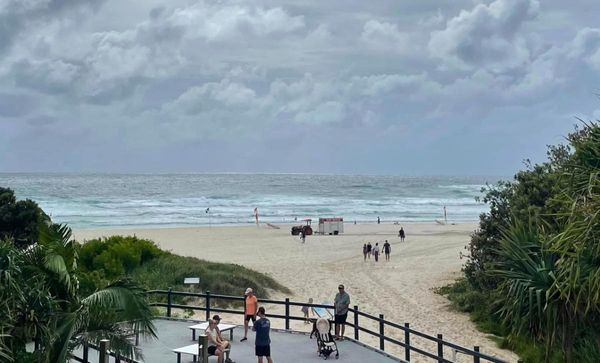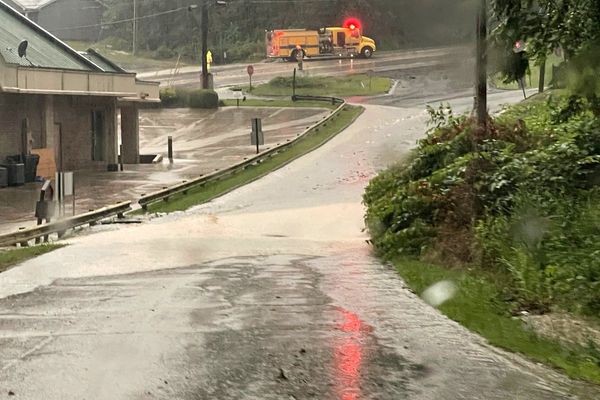
KINOKAWA, Wakayama -- Administering anesthesia is indispensable for surgery. This medical technique allows patients to undergo operations or treatments without worrying about physical pain. I heard from a U.S. anesthesiologist visiting Japan that "it was a Japanese who successfully used general anesthesia for the first time in the world."
I also learned that the Japanese, Hanaoka Seishu (1760-1835), is dubbed a saint doctor. While his name is known globally, Hanaoka was based in the countryside of Kishu, now Wakayama Prefecture and part of Mie Prefecture.
To learn more about this doctor, I traveled to Kinokawa, Wakayama Prefecture, to visit the former site of his clinic compound, which was restored and is now open to visitors.

Global pioneer in general anesthesia
I walked for 20 minutes or so from Nate Station on the JR Wakayama Line while enjoying the colors of mikan tangerines and persimmons along a gentle slope, before arriving at Seishu-no-Sato, a facility honoring the life and achievement of Hanaoka.

This wooden facility from the Edo period (1603-1867) includes the restored compound, called Shunrinken, that comprises the site of his clinic, residence and medical school.
Hanaoka successfully conducted removal surgery on a breast cancer patient under general anesthesia in 1804. As this achievement became widely known, a number of women suffering the disease visited his clinic. Hanaoka treated about 150 cases, while he accepted more than 1,000 students who came from all across Japan.
Hanaoka's success took place 42 years before that of Western medicine. Shunrinken was practically at "the forefront of most advanced medicine" in the world around that time.

Ideal doctor
Hanaoka was born into a family that had practiced medicine for generations. He studied both Western and Oriental medicine for three years in Kyoto. During his study, he heard that cancer surgery was conducted without anesthesia in the West. After returning to his hometown, he worked hard to realize general anesthesia.
After 20 years of trial and error, he finally invented an anesthetic for internal use and named it "Tsusensan." To decide the main ingredient, he referred to the accumulated expertise of the Oriental medicine and selected datura metel, a plant commonly known as devil's trumpet and called mandarage or chosen asagao in Japanese.
Both his mother and his wife volunteered to take this anesthetic to test its effect. This episode is dramatically depicted in Sawako Ariyoshi's novel "Hanaoka Seishu no Tsuma" (The Doctor's Wife).
To my surprise, it is said that Hanaoka himself kept no concrete record of his study on the medication. He also made students promise not to disclose the details of Tsusensan. He probably believed that the anesthetic should be strictly controlled as he was aware of its risk to human life if administered incorrectly.
In later years, research was conducted on patients treated by Hanaoka and it was discovered that they lived for an average of two to three years and up to 41 years after undergoing surgery. The data is phenomenal, considering the medical standards around that time.
Hanaoka also invented a surgical knife suited to remove tumors and other medical tools by himself. These items are on display in an exhibition room, along with records of surgery and documents featuring a letter sent to Hanaoka by Sugita Genpaku (1733-1817), a contemporary of Hanaoka and a leading scholar of Dutch studies.
In the exhibition room, a woman in her 40s from Kaizuka, Osaka Prefecture, was intently viewing displays. She said that her mother just underwent an operation. "I felt Hanaoka's unusual enthusiasm here. After learning about the history [of anesthesia], I've become more grateful [to him]."
Wakayama Medical University in the prefecture pays tribute to Hanaoka through its school crest, which is designed after a datura metel flower. The university also organizes a visit to the Seishu-no-Sato facility for new students.
Hiroki Yamaue, 62, director of Wakayama Medical University Hospital, is a follower of Hanaoka and has been working hard to develop treatments for pancreatic cancer, which is a refractory disease even today.
"Each time I visit [the facility], I'm better motivated," Yamaue said. "This place tells me the importance of having the guts to open a new page in medical history."
I took time to view the books written by Hanaoka and other items in the exhibition room. I came to know he had taught students his belief, "Naigai Goitsu, Katsubutsu Kyuri." Through this phrase, Hanaoka conveyed the message that a medical practitioner must know the true nature of diseases to better treat patients beyond the boundaries of internists and surgeons or the Western and the Oriental medicines. He also repeatedly told students "not to be impolite to patients" and "to treat patients carefully and thoughtfully."
People suffering from diseases, in any age and at any age, want to rely on doctors to recover. They expect their doctors to have a wide perspective, accurately pinpoint the cause of their diseases and cure them. This image of ideal doctors overlaps with Hanaoka in my mind.
-- How to get there
About 1 kilometer northeast of Nate Station on the JR Wakayama Line. By car, it is close to the Kinokawa-Higashi Interchange or Katsuragi-Nishi Interchange on the Keinawa Expressway. Admission to the exhibition room and Shunrinken, which are open 10 a.m.-4 p.m., costs 600 yen for adults and 300 yen for junior high school students or younger. The facility is closed on Tuesdays as well as the year-end and New Year period. There is also a Michi-no-Eki rest and shopping area on site. For more information, call the facility at (0736) 75-6008.
-- Extend your trip!
Kishi Station
A terminal station of Wakayama Electric Railway's Kishigawa Line. This station has been very popular since Tama, a calico cat, was named its stationmaster in 2007. Currently, Tama II, named Nitama, is in the station 10 a.m.-4 p.m., except Wednesdays and Thursdays, entertaining fans visiting from across the world.
Read more from The Japan News at https://japannews.yomiuri.co.jp/







